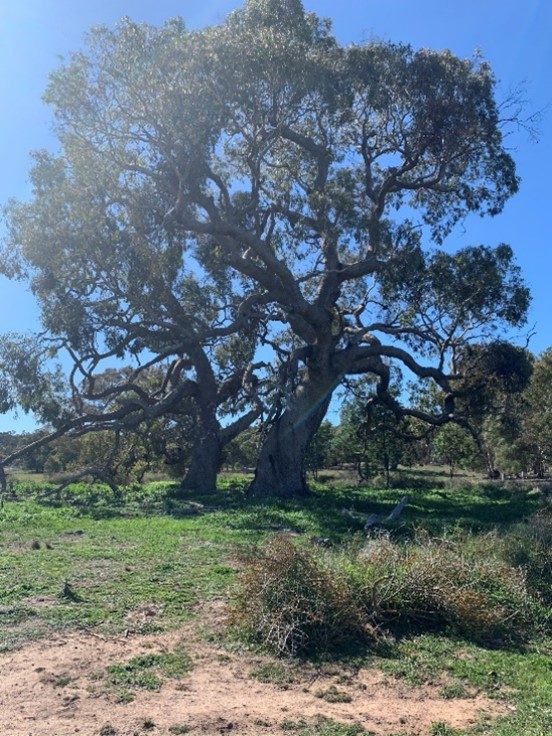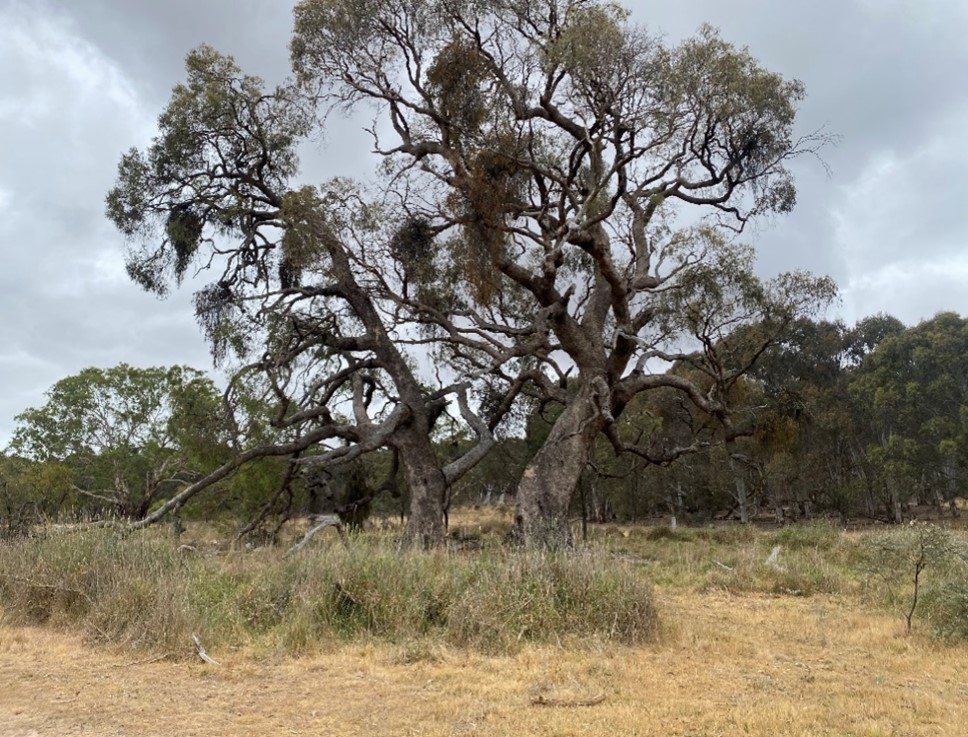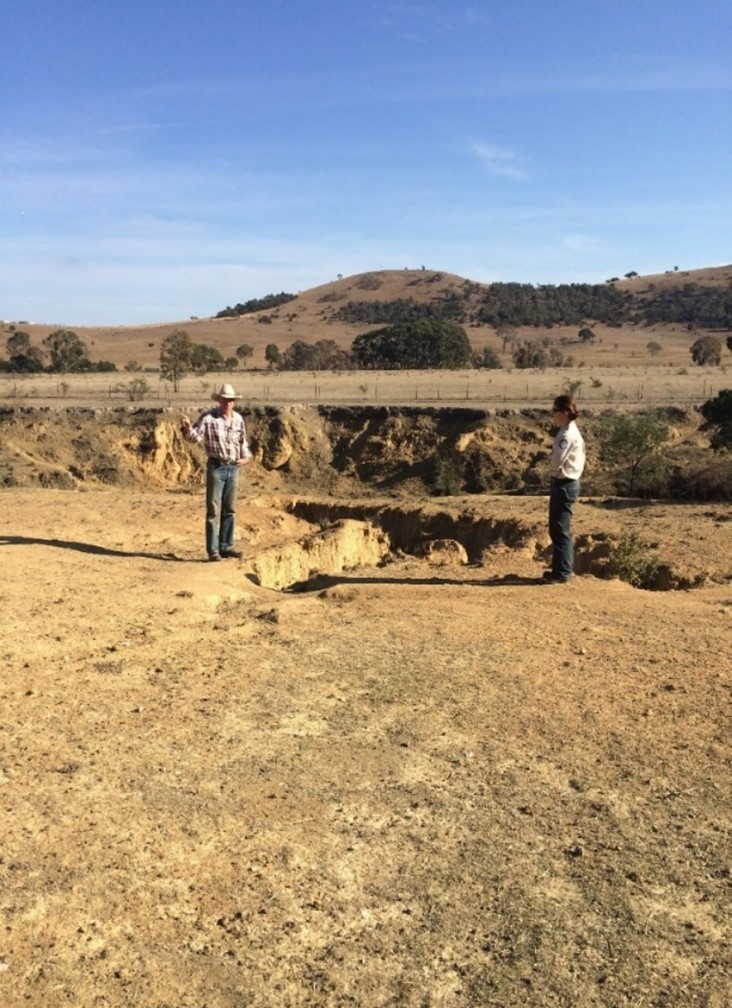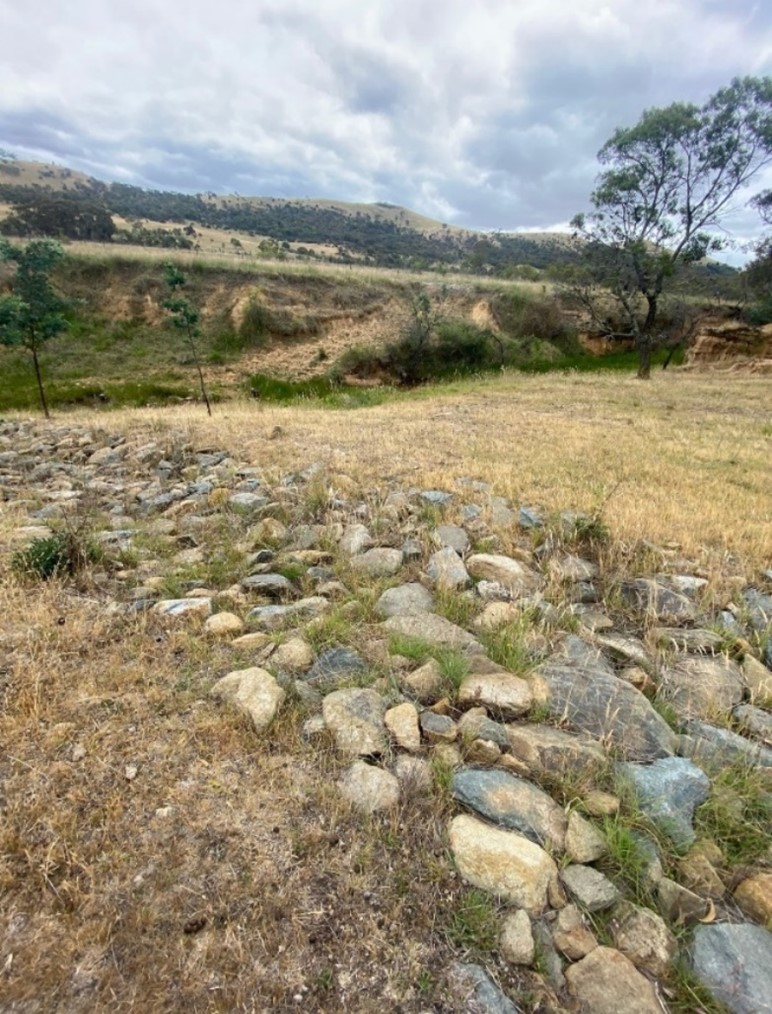Take a look at how we have helped ACT Parks and Conservation to improve the function of Taylor Conservation Area and best achieve the role of an offset.
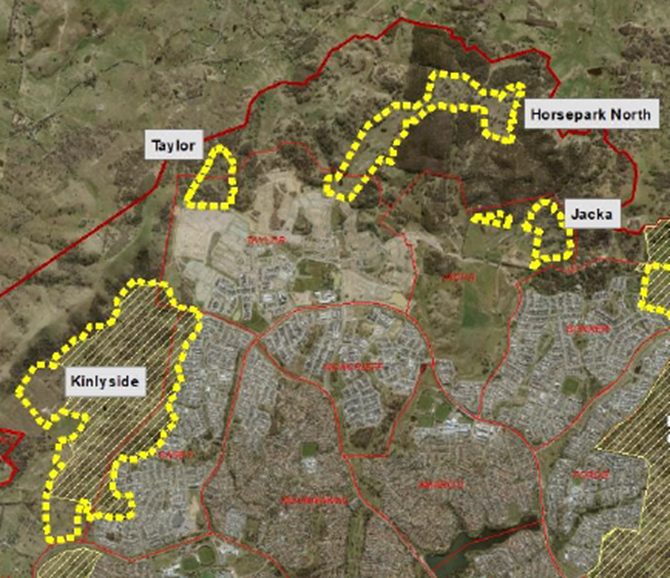
In August 2020, the ‘Northern Woodlands Landscape Improvement Implementation Plan’ was written for the area now known as Taylor Conservation Area.
The Plan encompassed four reserves – Horse Park North, Kinlyside, Taylor and Jacka.
Recommended actions have since been systematically implemented by the ACT Parks and Conservation Service and ERDP Pty Ltd was re-engaged to conduct a review of on-ground works and update the Plan in 2024.
Image description: Location of Taylor Conservation Areas in North Canberra.
Background
The offset reserves of Jacka, Taylor, Horse Park North and Kinlyside were set aside as avoidance (to development) areas in 2014 as part of the Gungahlin Strategic Assessment, to protect and enhance nationally endangered White Box – Yellow Box – Blakely’s Red Gum Grassy Woodland (BGW) communities in perpetuity.
Key conservation values include Box Gum Woodland and other Matters of National Environmental Significance such as the Golden Sun Moth and Pink-tailed Worm Lizard. The northern woodlands landscape also provides important habitat and regional links for threatened and declining woodland birds.
Through mapping and monitoring across the reserves it became apparent that there was a need for a specific and integrated plan to guide on-site works. The ACT PCS Environmental Offsets Management team engaged Environmental Restoration Design and Planning to develop a specific implementation plan with a focus on improving landscape function with reference to recommendations from monitoring activities.
Horse Park North
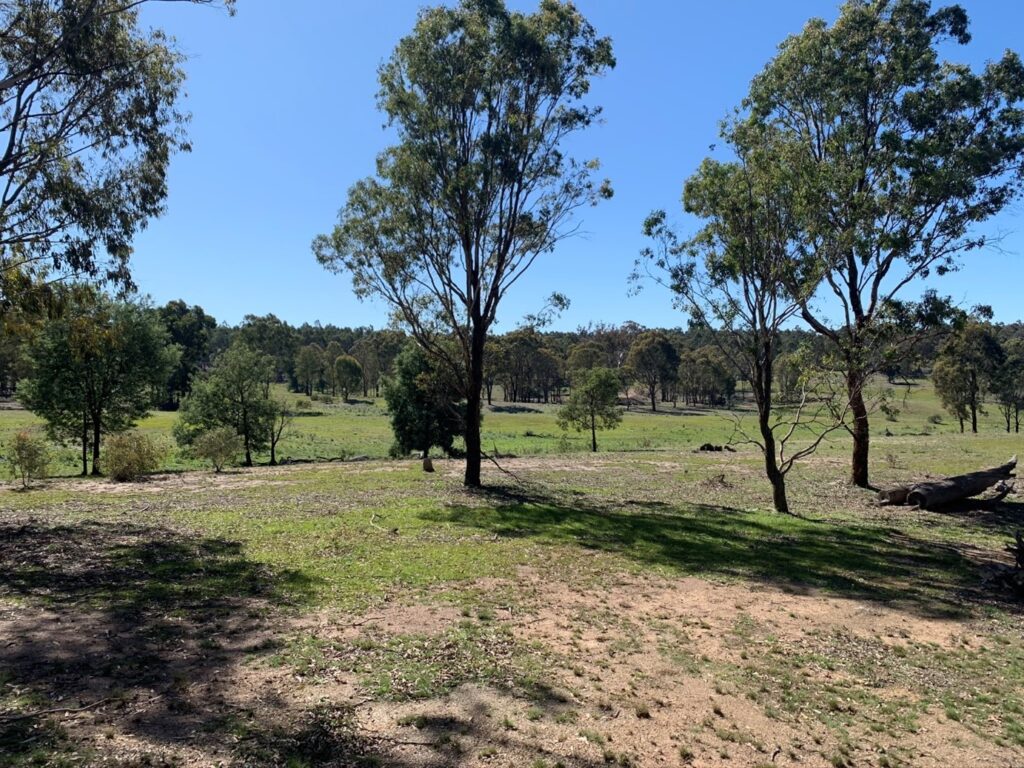
Horse Park North Offset consists of a complex array of habitat types, and number of different vegetation communities including Box Gum Woodland, Dry Schlerophyll Forest, Swampy valley floors, secondary grasslands and planted vegetation.
The primary target for Horse Park North is to improve the quality of the Box Gum Grassy Woodland and manage erosion. In order to achieve these, actions centred on assisted natural recovery to improve landscape function. One of the main challenges is the low levels of groundcover due to drought and overgrazing.
Image Description: Diverse habitat types of Horse Park North including a large dam at the bottom of the valley.
Recommended actions included:
- Assist native plant recolonization from evident diversity of native grass and forb seed in the soil.
- Revegetation to shade out weeds and provide connectivity between remnant vegetation and 2020 plantings.
- Utilise woody debris to slow water, trap soil, provide microhabitat and return organic matter back to the soil.
- Establish fence lines to manage stock grazing and protect eroded sites.
The above list has largely been completed, with extensive revegetation carried out, weeds controlled (focusing on Serrated Tussock and woody weeds), and erosion stabilised.
At the time of review groundcover was high due to recent wet seasons and many of the issues experienced throughout the drought have largely been rectified. However, the high biomass levels also include mean that there has been increased regeneration of weed species which have required additional investment.
Overall, there has been considerable improvement in condition of Box Gum Woodlands, secondary grasslands, and significant stabilisation of soil.
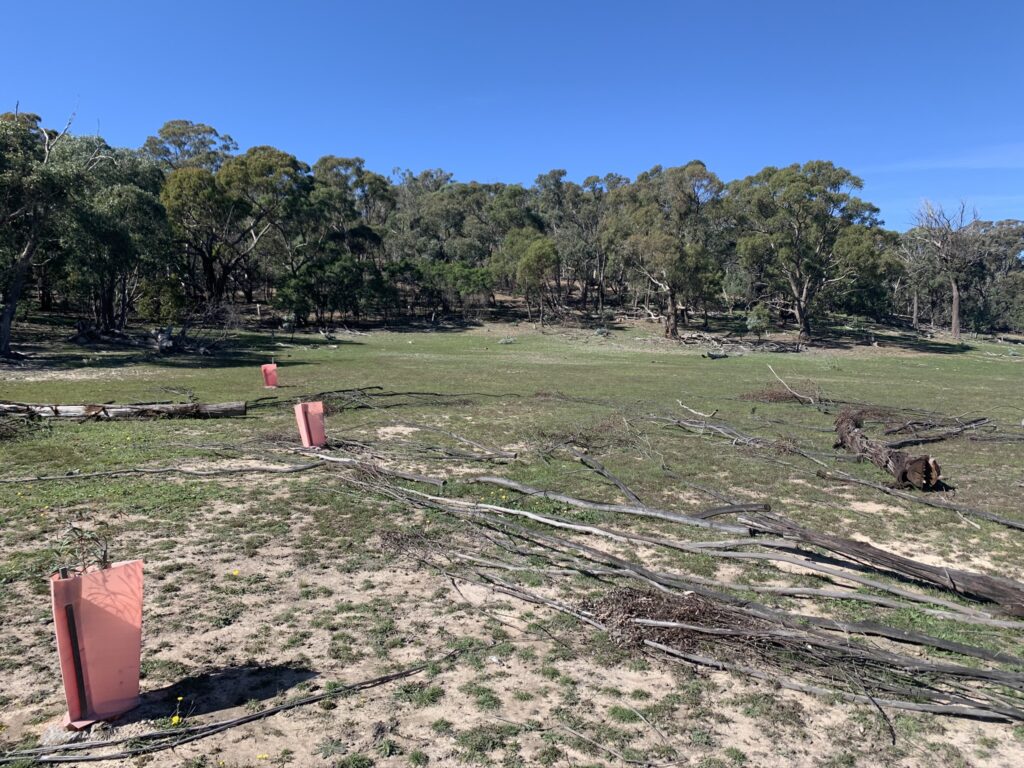
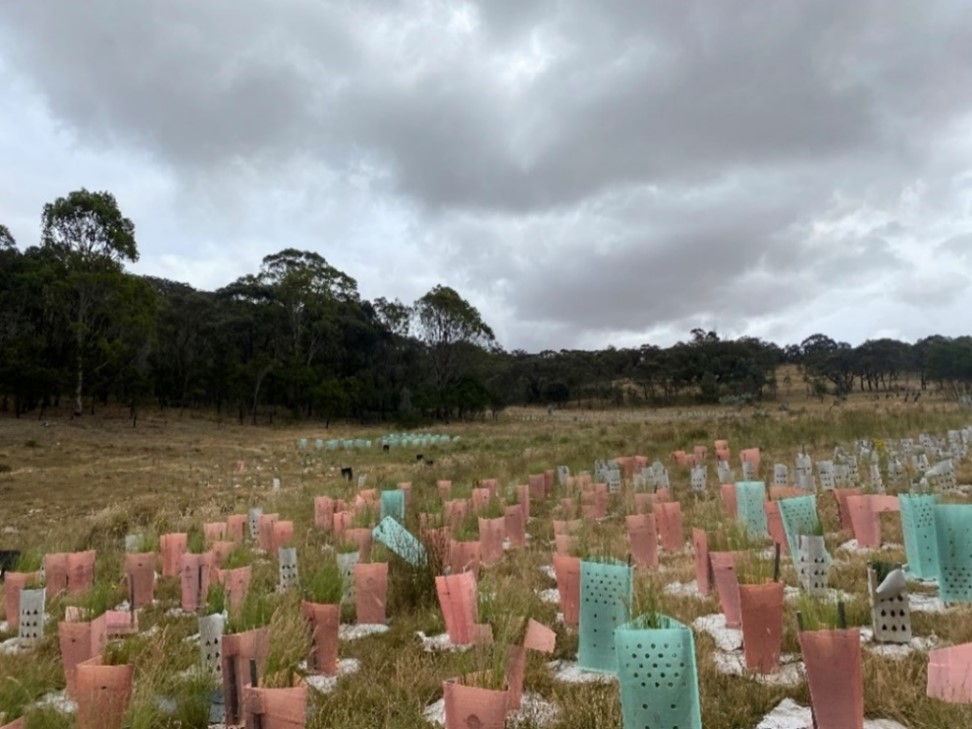
Taylor
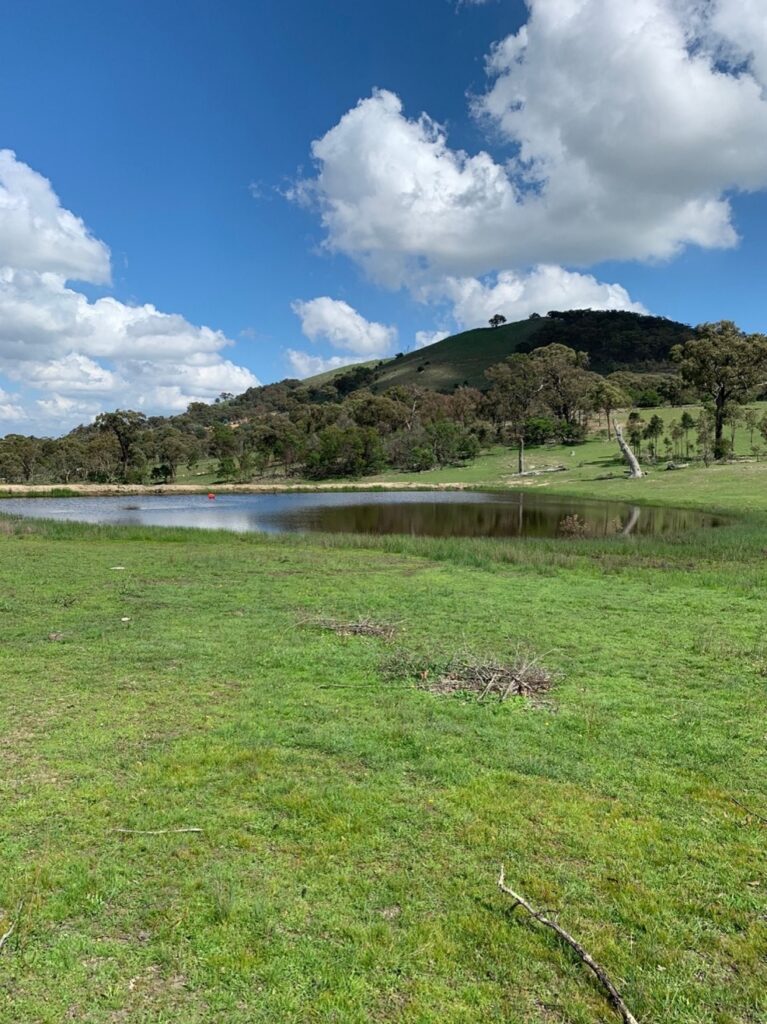
Taylor Reserve consists of steep rocky slopes with Dry Schlerophyll Forest transitioning to Box Gum Woodlands on the lower slopes. Most of the valley areas have been cleared and sodic soils in drainage lines are eroding. Woodland is regenerating and secondary grasslands have developed in cleared areas
The primary target for Taylor Reserve is to improve the quality of the Box Gum Grassy Woodland.
Image Description: Large habitat dam which would benefit from some habitat complexity.
Recommended actions included:
- Revegetation to connect remnant patches of vegetation as well as reduce water flow, further erosion and soil loss.
- Small scale rock flumes to stabilise soil around small but active headcuts.
- Continue to control Brian Rose and other woody weeds and place dead plants in head cuts and along bare gully walls.
The on-ground work recommended for Taylor have been completed, and the site is in good condition with a high level of regeneration of grasses and overstorey trees in the Box Gum woodlands and secondary native grasslands. Erosion has stabilised and the site will be resilient to future drought conditions going forward.
Kinlyside
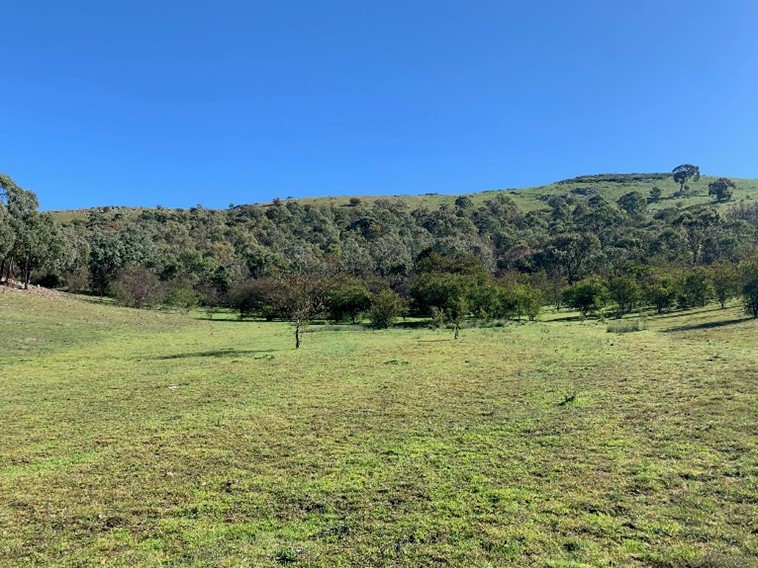
Kinlyside differs from the other northern reserves, in that it is a designated Nature Reserve and has a finalised Management Plan (ACT Government 2015) outlining the significance of the site and management requirements. Large scale erosion works, fencing and revegetation of the gully system and targeted weeding were already being undertaken prior to our August 2020 Landscape Improvement Plan.
Image Description: Acacia cultriformis spreading into open grassy areas of Kinlyside Reserve.
Recommended actions included:
- Erosions control using rock flumes, stabilising dam walls with ground cover and coarse woody debris.
- Tack and trail assessment.
- Control of Acacia cultriformis, Sweet Briar, Cootamundra Wattle and Pyracantha as they threaten endemic plant communities.
Kinlyside is a different reserve than it was in 2020. The combination of reduced stock pressure (as a result in changes to land management), the implementation of extensive erosion control works (major works by Soil Conservation Services and minor works by Parks and Conservation Services staff), weed control and revegetation, has resulted in a significant improvement in condition overall.
Jacka
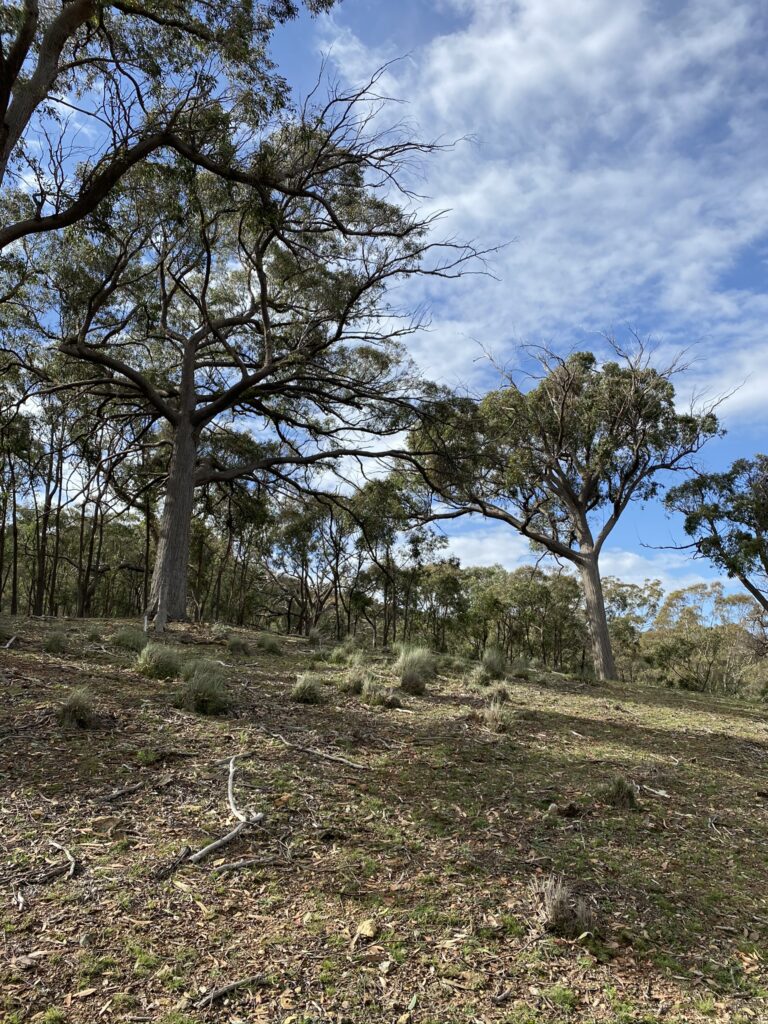
Jacka Offset Reserve is relatively small and consists of regenerating Dry Schlerophyll Forest transitioning to Box Gum Woodland on the mid and lower slopes. Jacka has a high level of biodiversity with a mixture of remnant and native groundcover vegetation but the area will still benefit from revegetation in clumps to enhance connectivity and to diversify understorey species.
Image Description: An active erosion headcut requiring attention.
Recommended actions included:
- Rock flume construction to as part of erosion control works program for the Northern Reserves.
- Extensive Serrated Tussock control program.
- Low priority revegetation if recourses allowed.
Jacka Offset was in a natural condition when it was reviewed in 2020, apart from some high priority erosion control works (not completed) and some low priority revegetation activities to improve mid-storey species diversity. Groundcover has improved considerably due to recent wet seasons. The focus for intervention activities has been on weed control (mostly Serrated Tussock) and this important work has been carried out to a high degree.
Kinlyside and Horse Park North reserves are likely to attract increasing numbers of visitors due to surrounding development pressure which has increased significantly since 2020 and continues to do so. This will put a great deal more pressure on these reserves, and thought is now being given to the development of walking trails and interpretations to educate visitors and dissuade them from accessing areas with sensitive conservation values.
Proudly powered by WordPress
